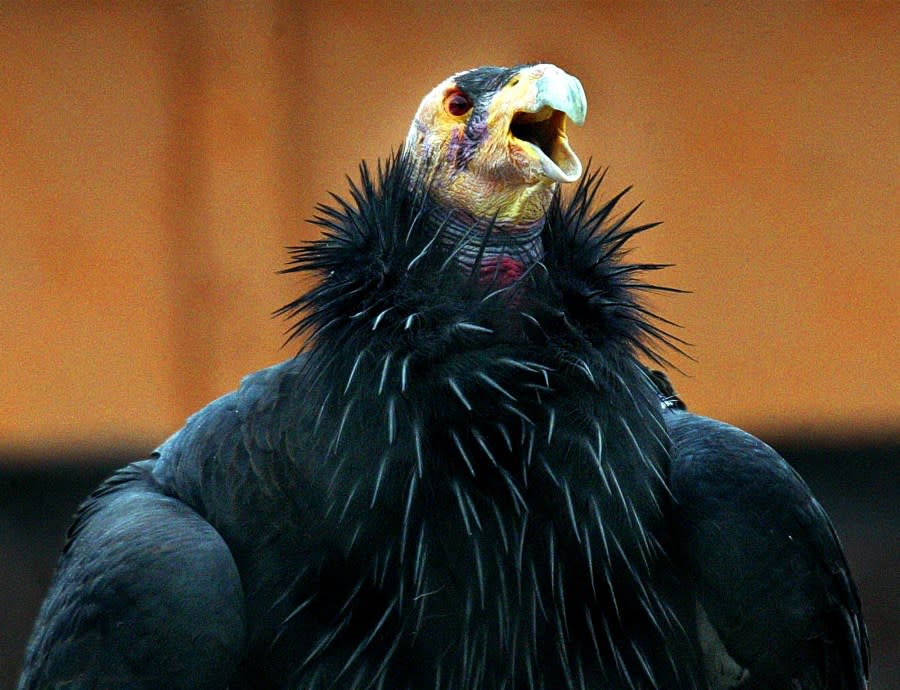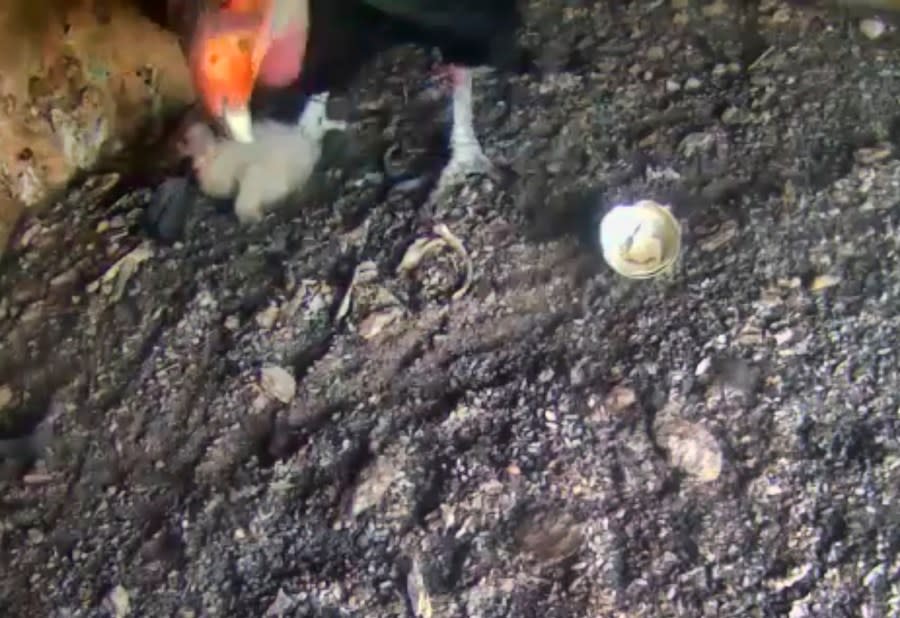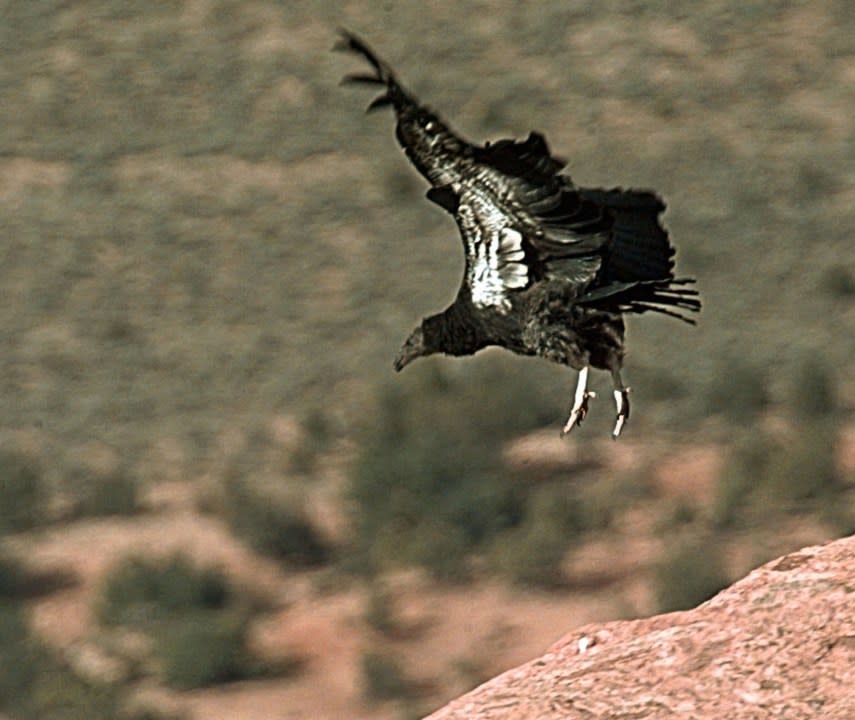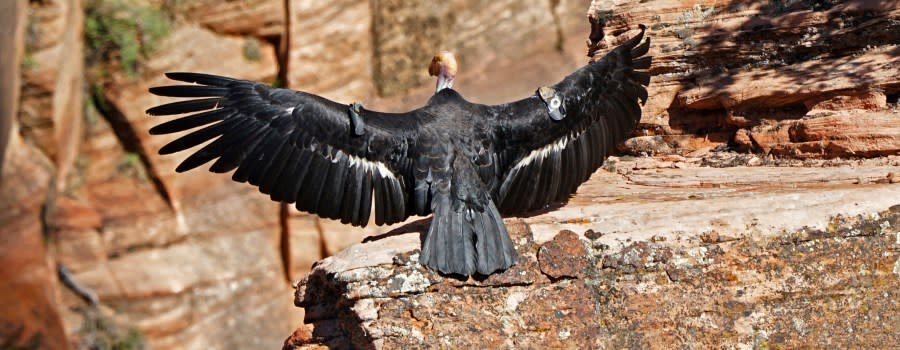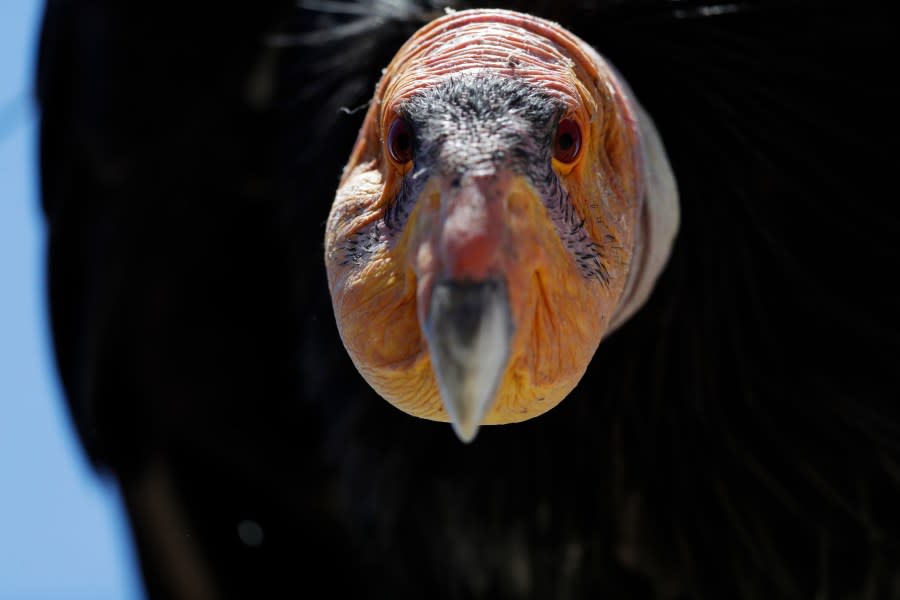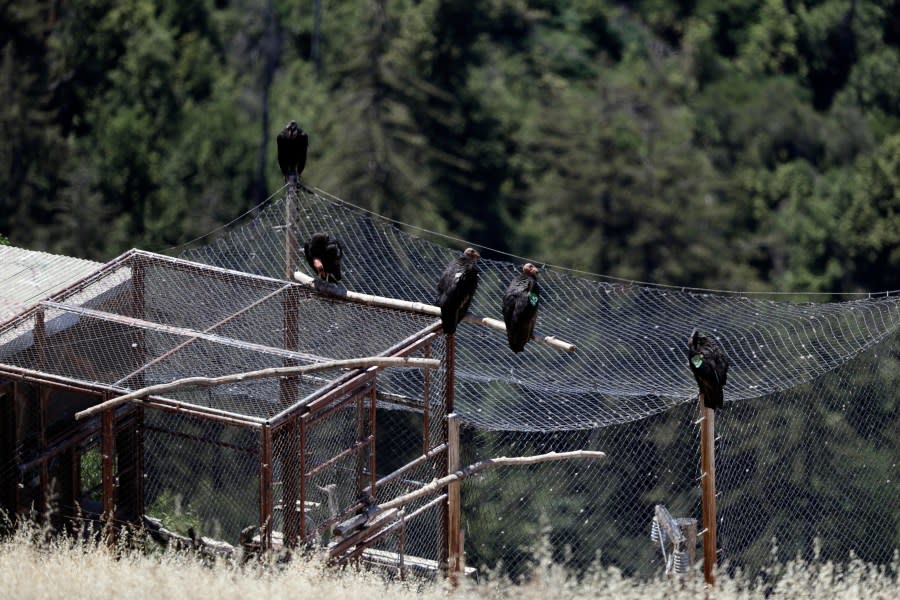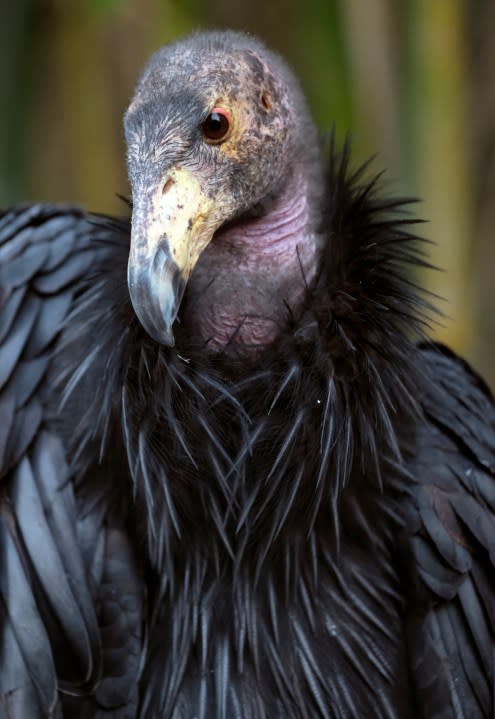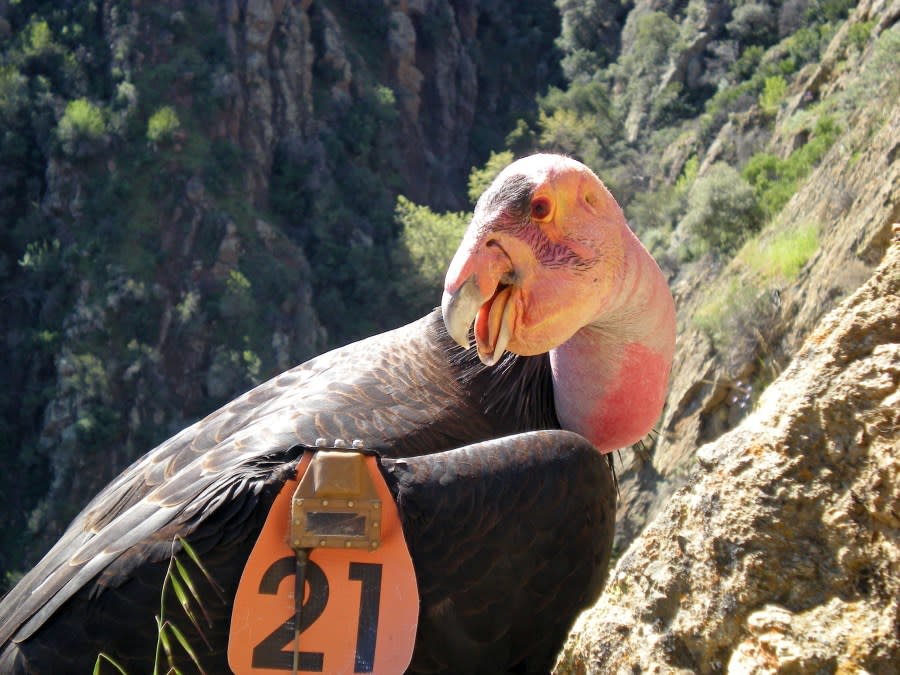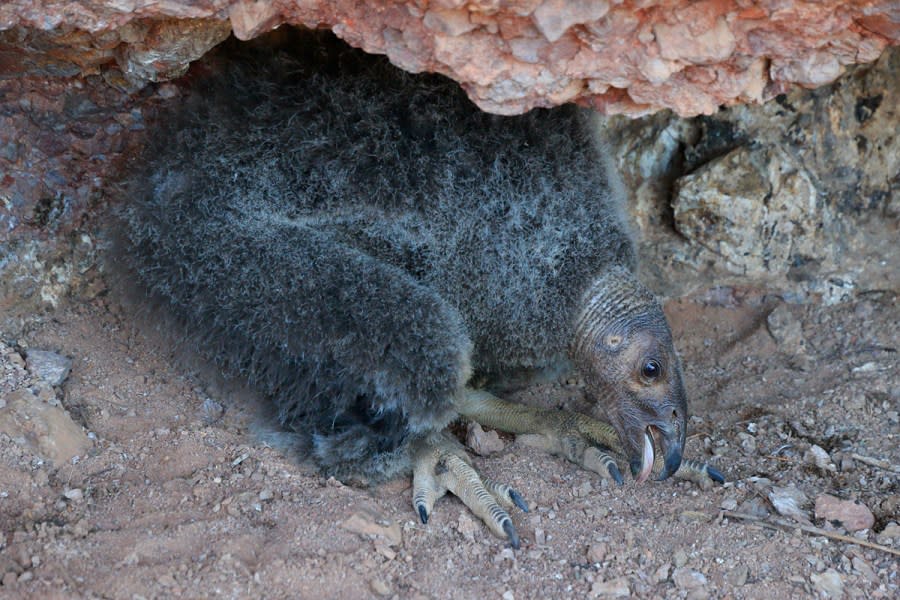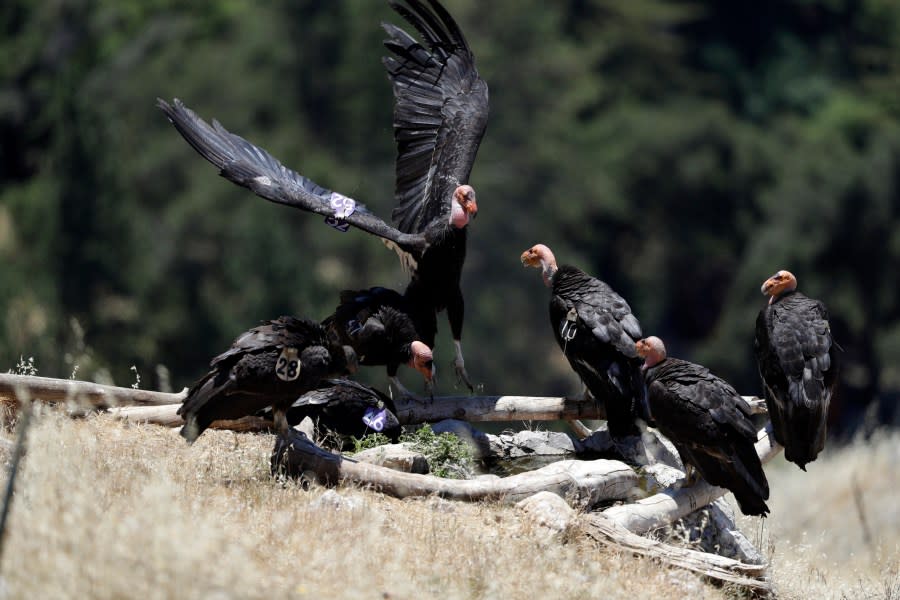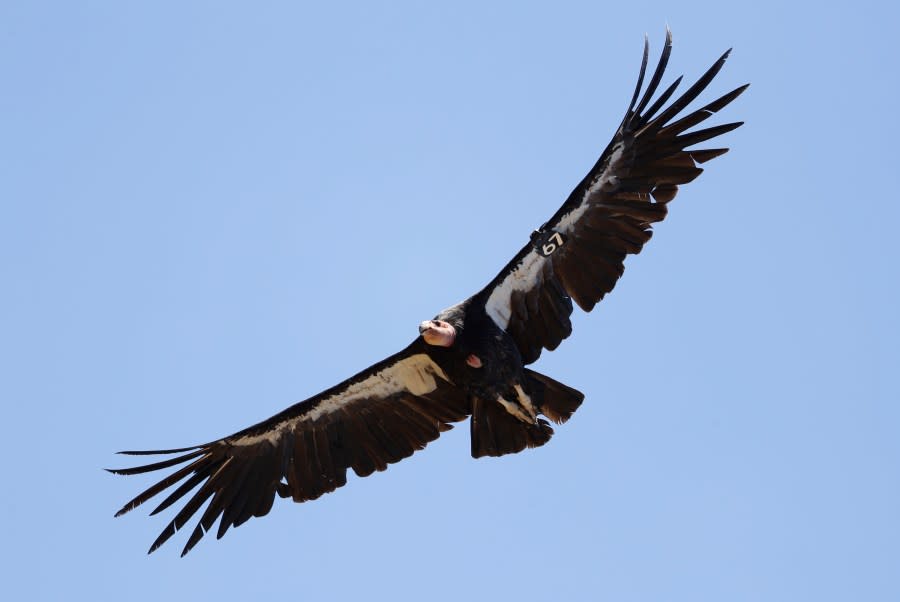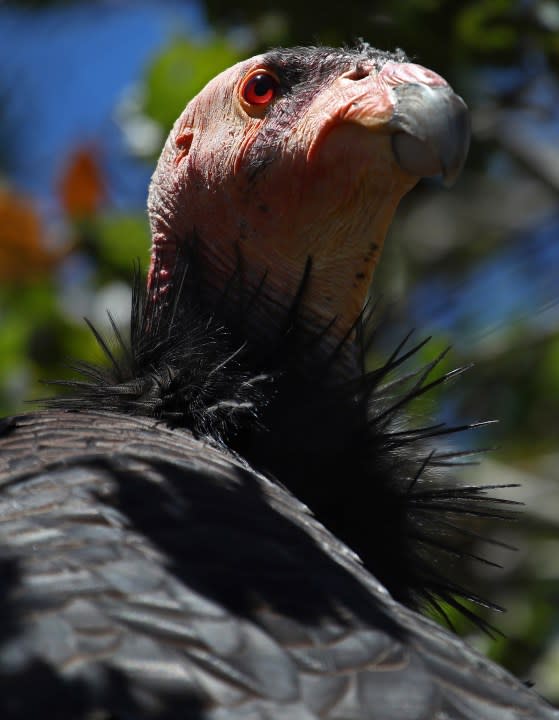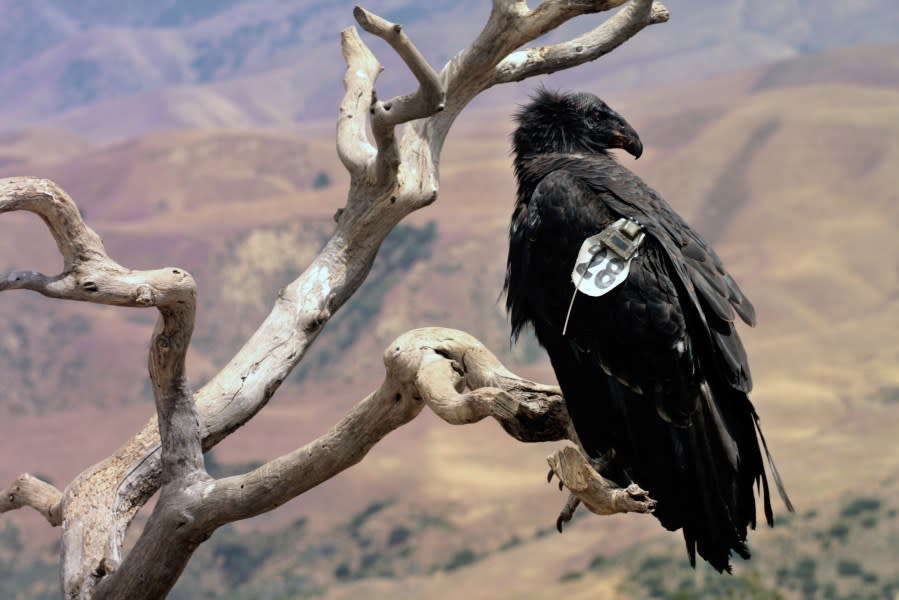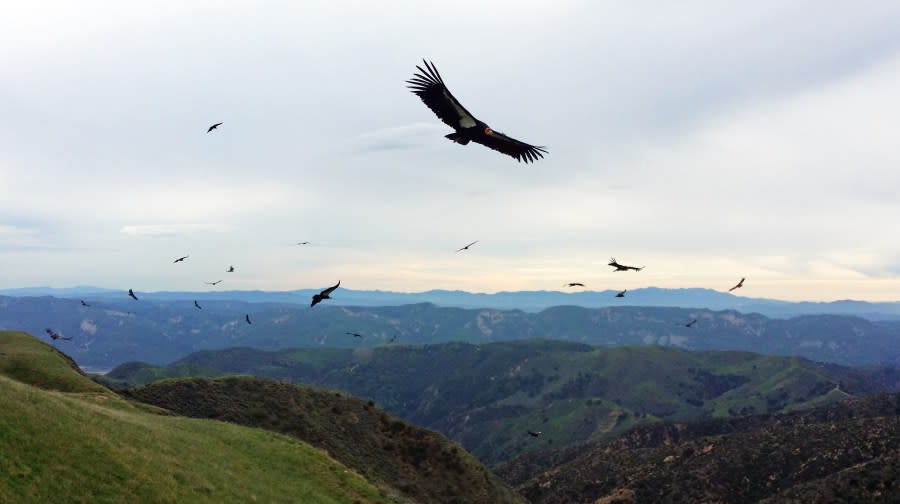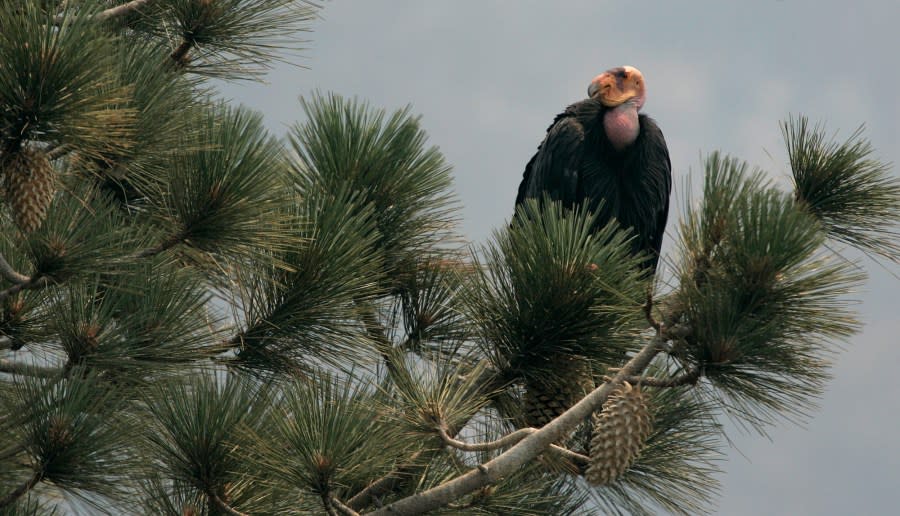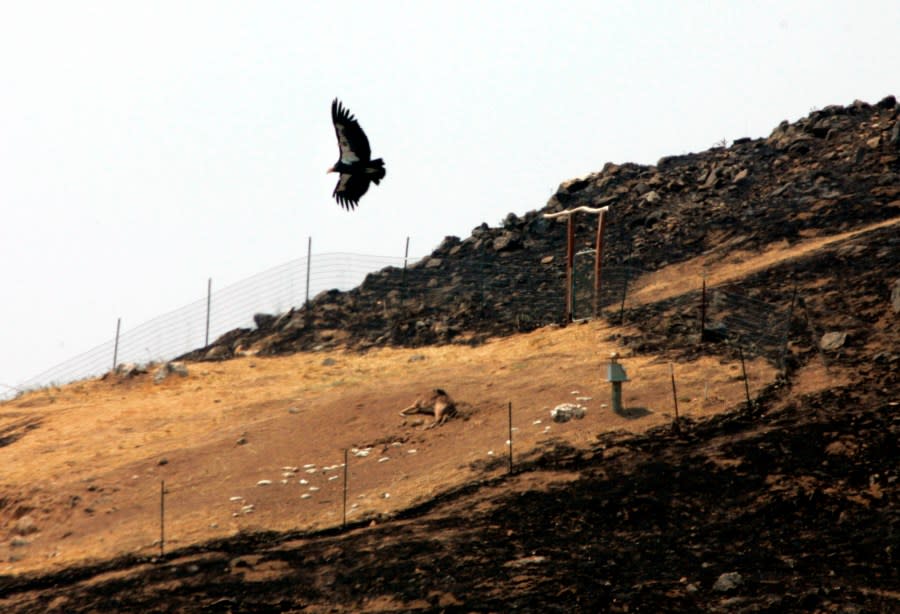1987: California condors captured, saved from extinction (Updated)

(Updated April 19, 2024)
(WHTM) — On April 19, 1987, the California condor went extinct in the wild. It was the only way to save the species.
Bald eagles thriving in Pennsylvania
California condors (Gymnogyps californianus) are enormous — North America’s largest land birds. They weigh up to 25 pounds and have a wingspan of about 9.5 feet. They are scavengers, not really capable of hunting.
FILE – In a Thursday, Nov. 20, 2003 file photo, a California condor is seen at the Oregon Zoo condor breeding facility, near Carver, Ore. The Yurok Tribe hopes to restore condors to ancestral lands in Northern California. If they succeed, it would be the first reintroduction of condors in the northern half of their historical range, which stretches to British Columbia. (AP Photo/Rick Bowmer, File) In this image provided by the National Park Service a California condor nestling is seen on the Pinnacles National Park web cam on April 19, 2021. A California condor egg hatched in Northern California’s wild, a new member of Pinnacles National Parks condor recovery program. The egg hatched April 12, 2021 after two months of round-the-clock incubation by both parents who protected their fragile egg from the elements and potential predators, park rangers said in a social media post. (National Park Service via AP) FILE – A juvenile California Condor tries out his new freedom with a short flight over the Vermilion Cliffs in Northern Arizona. The California condor suffered from lead poisonings, shootings and interactions with humans since being introduced in southern Utah and northern Arizona in the mid-1990s, with little more than half of those released into the wild still alive. (AP Photo/Jeff Robbins, File) This April 19, 2014 photo provided by the National Park Service shows a female California condor at Utah’s Cable Mountain in Zion National Park, Utah. Biologists confirmed that this female California condor laid an egg that hatched at the park. Park rangers said Tuesday, July 11, 2019, they estimate the California condor hatched in May, nestled in a crevice of a sweeping red-rock cliff. (National Park Service via AP) In this May 13, 2019, photo provided by the National Park Service is a female condor in Zion National Park, Utah. Biologists confirmed that this female California condor laid an egg that hatched at Zion National Park in southwest Utah. Park rangers said Thursday, July 11, 2019, they estimate the California condor hatched in May, nestled in a crevice of a sweeping red-rock cliff. (National Park Service via AP) In this Wednesday, June 21, 2017, photo, a California condor sits in the Ventana Wilderness east of Big Sur, Calif. Three decades after being pushed to the brink of extinction, the California condor is staging an impressive comeback, thanks to captive-breeding programs and reduced use of lead ammunition near their feeding grounds. (AP Photo/Marcio Jose Sanchez) In this Wednesday, June 21, 2017, photo, California condors sit perched above an enclosure, where biologists trap them, to conduct research in the Ventana Wilderness east of Big Sur, Calif. Three decades after being pushed to the brink of extinction, the California condor is staging an impressive comeback, thanks to captive-breeding programs and reduced use of lead ammunition near their feeding grounds. (AP Photo/Marcio Jose Sanchez) This Saturday, Sept. 3, 2016 photo shows a California Condor on display at the Los Angeles Zoo. (AP Photo/Richard Vogel) This undated photo from the U.S. Fish and Wildlife Service shows Condor No. 21 wearing a GPS transmitter while perched near his nest in the Hopper Mountain National Wildlife Refuge near Fillmore, Calif.(Joseph Brandt/U.S. Fish and Wildlife Service via AP) This June 14, 2016, photo provided by the National Park Service shows condor chick 828 in her nest at 60 days of age in Pinnacles National Park near Paicines, Calif. The California condor chick hatched in the wild, survived. and flew out of its nest at Pinnacles National Park for the first time since the 1890s, officials said Wednesday, Oct 12, 2016. (Gavin Emmons/National Park Service via AP) FILE – In this June 21, 2017, file photo, California condors huddle around a watering hole in the Ventana Wilderness east of Big Sur, Calif. The Mail Tribune reports Friday, April 5, 2019, that Northern California’s Yurok Tribe, the National Park Service, and the U.S. Fish and Wildlife Service issued a detailed plan for the reintroduction in an environmental impact report. (AP Photo/Marcio Jose Sanchez, File) FILE – In this June 21, 2017, file photo, a California condor takes flight in the Ventana Wilderness east of Big Sur, Calif. (AP Photo/Marcio Jose Sanchez, File) A California Condor suns itself in a habitat on the California Trail at the Oakland Zoo on Wednesday, June 20, 2018, in Oakland, Calif. (AP Photo/Ben Margot) This undated photo provided by the U.S. Fish and Wildlife Service shows a juvenile California condor, identified as No. 428, wearing a GPS transmitter while perched at the Bitter Creek National Wildlife Refuge near Maricopa, Calif. Condor No. 428 died during surgery while being treated for lead poisoning in 2013. The FWS says that in 2015, for the first time in decades, more condors hatched and fledged in the wild than adult wild condors died.(Angela Woodside/U.S. Fish and Wildlife Service via AP) This Jan. 30, 2015 photo provided by the U.S. Fish and Wildlife Service shows more than 20 California condors soaring over Tom’s Canyon at the Hopper Mountain National Wildlife Refuge near Fillmore in southern California, about 65 miles northwest of Los Angeles. Officials with the U.S. Fish and Wildlife Service said Monday, Feb. 22, 2016, that for the first time in decades, more condors hatched and fledged in the wild last year than adult wild condors died. (Joseph Brandt/U.S. Fish and Wildlife Service via AP) FILE – In this July 10, 2008, file photo, a California Condor is perched atop a pine tree in the Los Padres National Forest east of Big Sur, California. (AP Photo/Marcio Jose Sanchez, File) This undated photo provided by the U.S. Fish and Wildlife Service shows a California condor, identified as Condor No. 247, near his nest at the Hopper Mountain National Wildlife Refuge near Fillmore in southern California, about 65 miles northwest of Los Angeles. Officials with the U.S. Fish and Wildlife Service said Monday, Feb. 22, 2016, that for the first time in decades, more condors hatched and fledged in the wild last year than adult wild condors died.(Joseph Brandt/U.S. Fish and Wildlife Service via AP) A California Condor flies over a fire-ravaged sanctuary in the Los Padres National Forest east of Big Sur, Thursday, July 10, 2008. As wildfire whipped toward a remote sanctuary of the endangered California condor, the rare birds got their biggest test in survival after years of pampering by biologists: They had to live completely on their own. Forced away by flames, their scientist handlers could only hope the birds’ animal instincts would kick in. To their delight, they did. (AP Photo/Marcio Jose Sanchez)
Condors of the genus Gymnogyps once ranged across the entire continent of North America. It was during the Pleistocene Era, when the megafauna was truly mega. You had mammoths, mastodons, ground sloths, giant beavers…lots of animals that went large. Lots of big animals meant lots of big animal carcasses; it was a good time and place to be a large carrion-eating scavenger.
But towards the end of the Pleistocene about 10,000 years ago, North America suffered a mass die-off of large mammals. It happened very abruptly in geological terms, over just about 2,000 years. The range of the Gymnogyps genus shrank.
By the time European settlers started arriving, only the California condor was left, and just along the west coast from British Columbia to Baja California. By 1940, the condors’ range was down to coastal mountains in southern California. Humans were now definitely the driving force in the condors’ decline by encroachment on condor territory, pesticides, and especially lead poisoning caused when the condors scavenged carcasses containing fragments of lead bullets. The International Union for Conservation of Nature classified it as “critically endangered” — one step away from extinct.
Get daily news, weather, breaking news and alerts straight to your inbox! Sign up for the abc27 newsletters here
The U.S. Fish and Wildlife Service began the California Condor Recovery Program in 1979. By the mid-1980s, though, the condors were down to less than 30 birds, and it became obvious the birds couldn’t be saved if left to themselves in the wild.
In 1987, the Fish and Wildlife Service captured all the remaining birds (the last one being taken on April 19), and transferred them to captive breeding facilities at the San Diego Wild Animal Park and Los Angeles Zoo.
There were only 22 of them then.
The hope was the recovery project would be able to establish two geographically separate populations in California and Arizona. Each would have 150 birds and at least 15 breeding pairs. But California condors are notoriously slow breeders. They don’t reach sexual maturity until around age six, and a mated pair will produce just one egg every other year.
Wildlife expert warns of dangers of lead poisoning
Getting the numbers up would take a while. Fortunately, the birds will “double clutch” — if an egg is lost or destroyed, the female will lay a second egg. Biologists could remove the first egg which, upon hatching in an incubator, would be fed and raised by people using hand puppets so the chick wouldn’t imprint on humans. Meanwhile, the condors would raise the second chick.
By 1991, there were enough adolescent condors that it was possible to start releasing birds into the wild. In 2003, a nestling fledged in the wild — the first since 1981. More breeding facilities came online, like the Santa Barbara and Oregon zoos, Chapultepec Zoo in Mexico City, and the World Center for Birds of Prey in Boise, Idaho. Condors were released in additional locations, and by 2008 more condors were in the wild than in captivity.
The 2021 World California Condor 2021 Population Update listed a total world population of 537. Of those birds, 203 were in the captive breeding population. The other 334 were flying free.
As of December 2023, the total population was up to 561.
But in 2023 the condors faced a new threat – Highly Pathogenic Avian Influenza. It’s the same kind of bird flu (Type A H5N1) that has forced farmers to kill millions of chickens to try to stop the spread. (It has also jumped to cattle and at least one human.) The most recent figures we can find (May 2023) show at least 22 condors died of the disease.
That same month, US officials authorized vaccinating California condors against the avian flu – the first time the United States approved inoculation of any bird against highly pathogenic avian influenza. (The first vaccinated condors were released to the wild in November of 2023.)
The condor is still listed as critically endangered. Avian flu notwithstanding, humans continue to be the main danger to the birds. Biologists are especially concerned about lead poisoning.
The Fish and Wildlife Service reports from 1992 through 2021, there were 120 documented deaths from lead poisoning, which accounted for “51 percent of the 234 condor deaths where a cause of death has been determined in the free flying population.” California began a total ban on lead ammunition for hunting in 2019.
Condor preservation has had its setbacks, and will no doubt face other problems in the future. Still, with almost 25 times as many birds now as when the captive breeding program started, the future for the California condor looks much more promising than it did in 1987.
To read the 2021 report on the condors, click here. To read the 2023 Venata Wildlife Society report, click here.
Information in this story came from the U.S. Fish and Wildlife Service, National Park Service, California Department of Fish and Wildlife, Los Angeles Zoo, Venata Wildlife Society, and Wikipedia.
For the latest news, weather, sports, and streaming video, head to ABC27.
